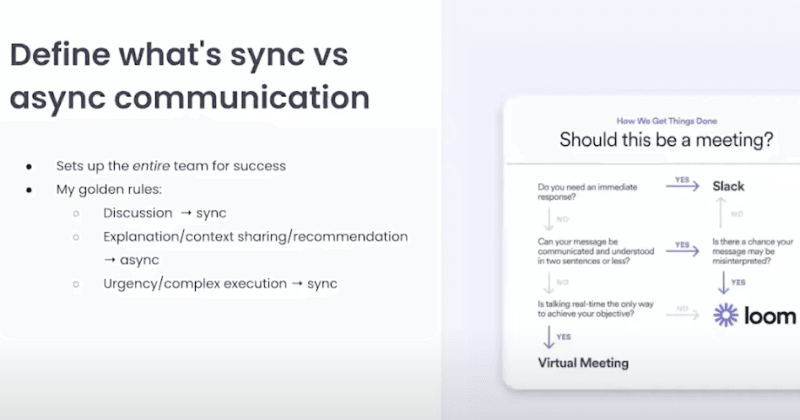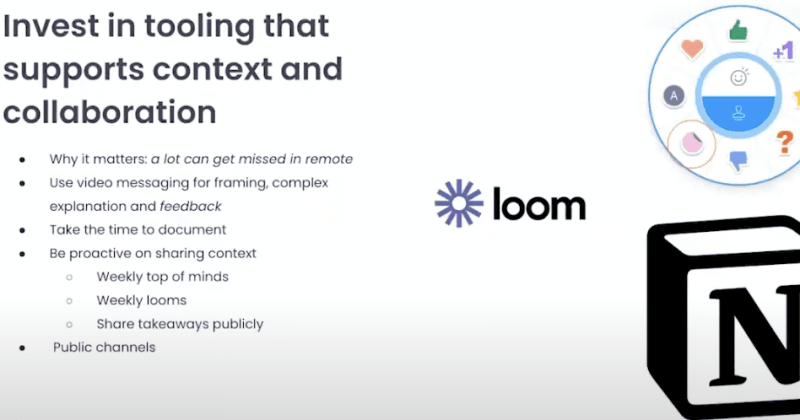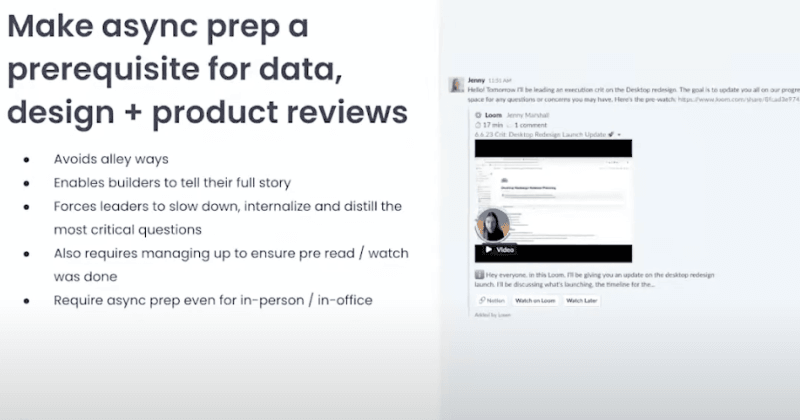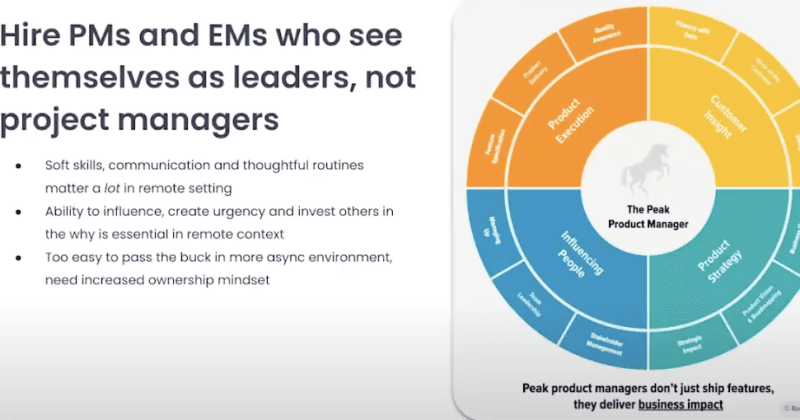Updated: May 8, 2025- 6 min read
Imagine a world where the lines of communication are open, yet don't demand an instant reply; where information flows freely, yet doesn't drown out other important tasks. This is the power of asynchronous (or 'async') communication, and in the ever-evolving landscape of product management, ensuring high performance in an async product team is not just an advantage—it's a necessity.
Editorial note: This post is based on a talk by Anique Drumright, Loom COO & fmr VP of Product, on Building Async Teams and contains additional insights and examples from the Product School team. You can watch the webinar in full above.
If you're aiming to stay ahead of the curve and foster a culture of enhanced collaboration and clarity in your product team, delving deep into the world of async communication is your next big leap. To do this, let’s explore the strategies and tools that will redefine how product teams communicate and collaborate.
Step one: sync vs. async - choose the right rhythm for your team
In product management, understanding the difference between synchronous and asynchronous communication is a key factor to achieve success. At the heart of every thriving global product team is a profound understanding of when to leverage each form of communication, ensuring that no beat is missed, and every team member is in rhythm.

Let's explore some of the pros and cons of synchronous vs asynchronous communication. For topics that thrive on real-time discussion, where the pulse of the conversation benefits from immediate back-and-forth, synchronous communication is your go-to. Think of these as the moments when the immediacy of a face-to-face conversation or a live meeting can untangle complexities and foster collective decision-making. It's about reading the room, observing reactions, and adjusting your strategy immediately.
On the other hand, when your intent is to disseminate information or lay the groundwork for an informed conversation, asynchronous methods shine. Employ tools like pre-read documents or Loom videos to set the stage. This not only ensures that each member comes to the table with a well-formed understanding but also enriches the subsequent dialogue, making every minute of your synchronous meetings more valuable.
However, a word of caution: While asynchronous communication is powerful, don't underestimate the connective tissue of regular check-ins during critical projects. There will be phases where the pace of development demands the immediacy of daily or weekly synchronous stand-ups. It's about keeping the pulse of the team, aligning on objectives, and ensuring that momentum is not only maintained but accelerated.
The art of effective product management communication lies in recognizing the rhythm of your team's needs and crafting the perfect blend of synchronous and asynchronous interactions.
Step two: equip yourself with the right tools
As a Product Leader, having the right tools at your disposal is non-negotiable. When managing teams spread across different time zones and geographies, the risk of miscommunication is large. This is where innovative solutions like Loom prove invaluable. They empower you to communicate more effectively with video messages, bridging the gap where written words might fall short.

And it doesn’t stop there. Platforms such as Notion or FigJam enhance this ecosystem, facilitating collaboration and ensuring every team member is on the same page. These tools are designed with asynchronous collaboration in mind, setting the stage for an unambiguous and streamlined flow of information.
Remember, ensuring transparency isn’t just a nice-to-have; it’s the cornerstone of a thriving async product team. Equip your team with the right tools, and watch your collaborative efforts flourish.
Step three: prime for productive reviews
The significance of asynchronous preparation cannot be understated, especially when it comes to data, design, and product reviews. Whether your team operates in a remote, hybrid, or in-office setting, the key lies in meticulous documentation and impactful pre-watch videos. These tools can spell the difference between a streamlined meeting and a disorganized one.

Picture this scenario, before delving into a product review, your team is introduced to a pre-watch video, meticulously curated to guide them through the topic's intricacies. By the time the actual review rolls around, each participant is already in the know, armed with a clear grasp of the primary concerns.
This paves the way for your synchronous gatherings to transition from mere back-and-forth explanations to deep, value-driven discussions, ensuring that every moment is time well spent.
Step four: hire leaders, not just managers
As you shape an async product team, it's imperative to onboard Product Managers (PMs) and Engineering Managers (EMs) who envision themselves as more than just conduits of tasks; they should be true leaders in every sense. Within the context of a remote or hybrid framework, attributes such as adaptability, emotional intelligence, and proficient communication rise to the fore.

The contemporary workspace is fluid and ever-changing and it calls for individuals who are highly dedicated to fostering a culture that's transparent, immediate, and inherently cooperative.
You also need to keep in mind that in asynchronous teams, there's an underlying peril of team members feeling isolated or disconnected. Therefore, to combat this, you’ll need leaders at the helm who can continually invigorate team dynamics, nurture cohesion, and champion a sense of shared responsibility. It's not just about overseeing projects; it's about inspiring a united front where everyone feels valued and integrated.
Key takeaways
Embracing an async framework for your product team involves:
Clearly defining synchronous versus asynchronous communication.
Investing in tools that promote context and empathy.
Making async preparation mandatory for all reviews.
Hiring leaders who envision themselves as more than just project managers.
Make sure you adapt, evolve, and lead your team toward a future where asynchronous communication becomes a strength, not a challenge.
Learn more with Product School
Build a high-performing async team and lead your Product teams to success with our Product Leader Certification (PLC)® designed by successful Product Managers to help you build end-to-end product development skills while offering the hands-on experience you need to lead product teams.
Discover the PLC today, and take the first step towards becoming a strategic, successful, and influential Product Manager. Schedule a call today to find out more.
Updated: May 8, 2025





